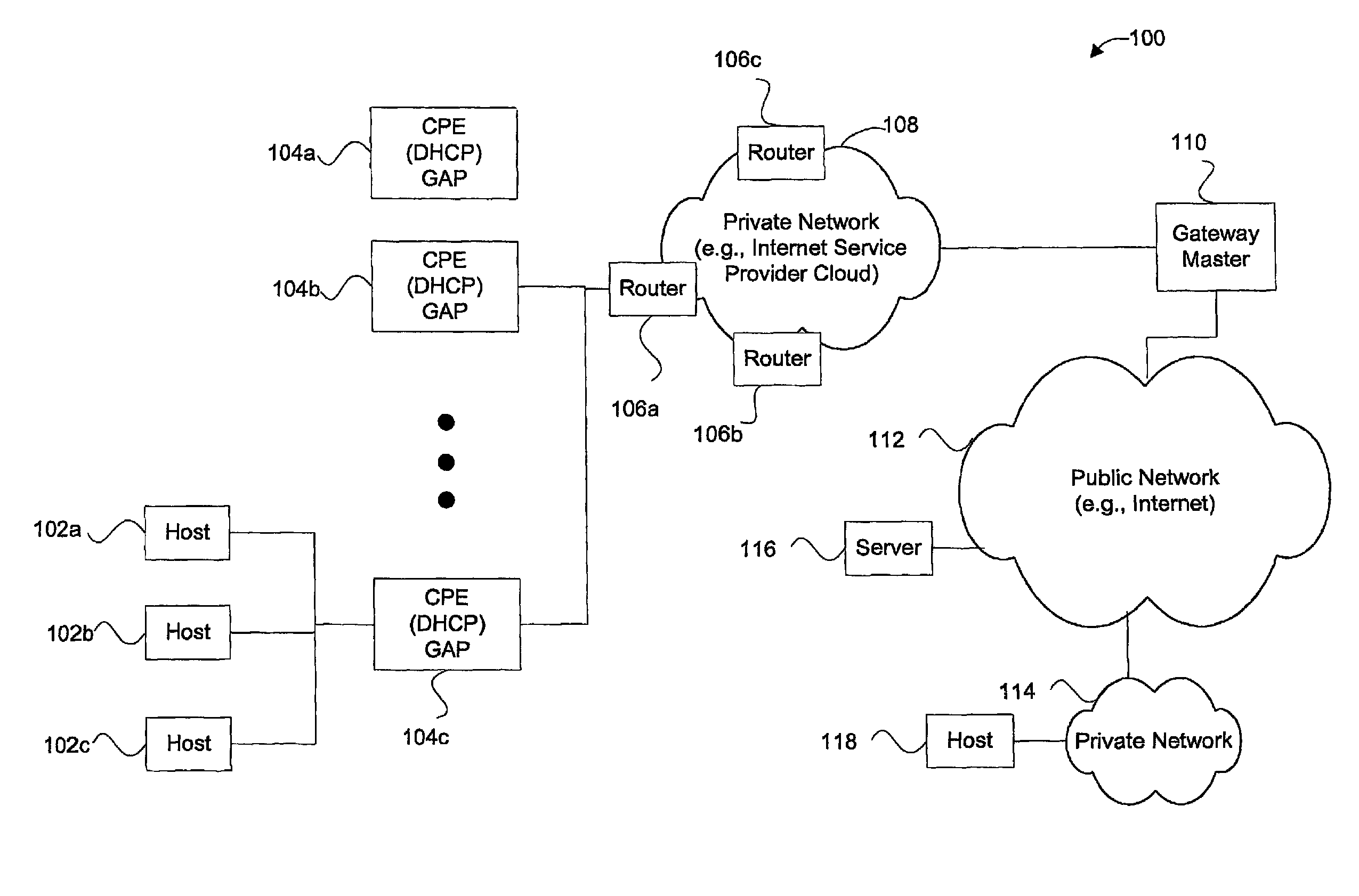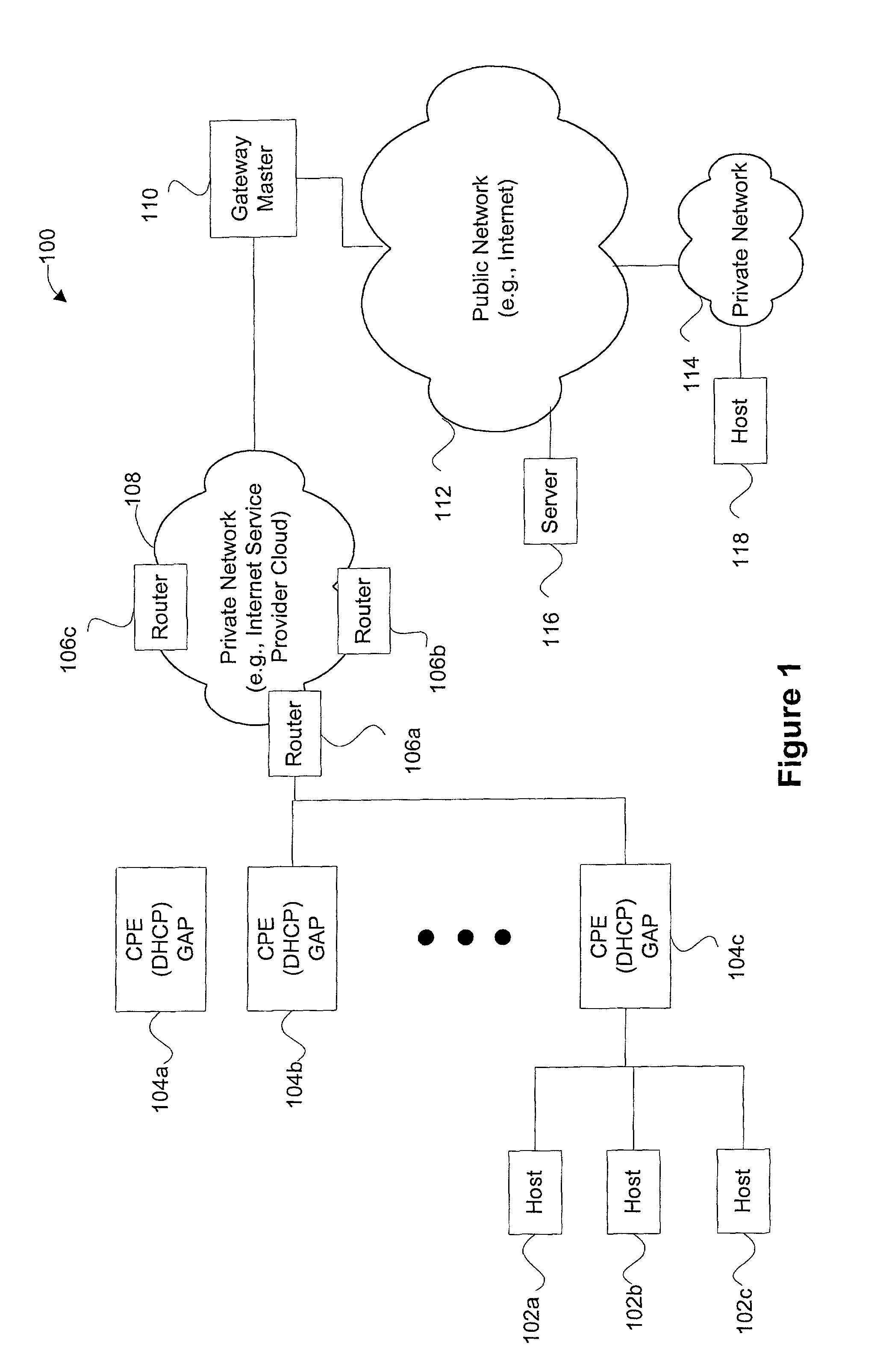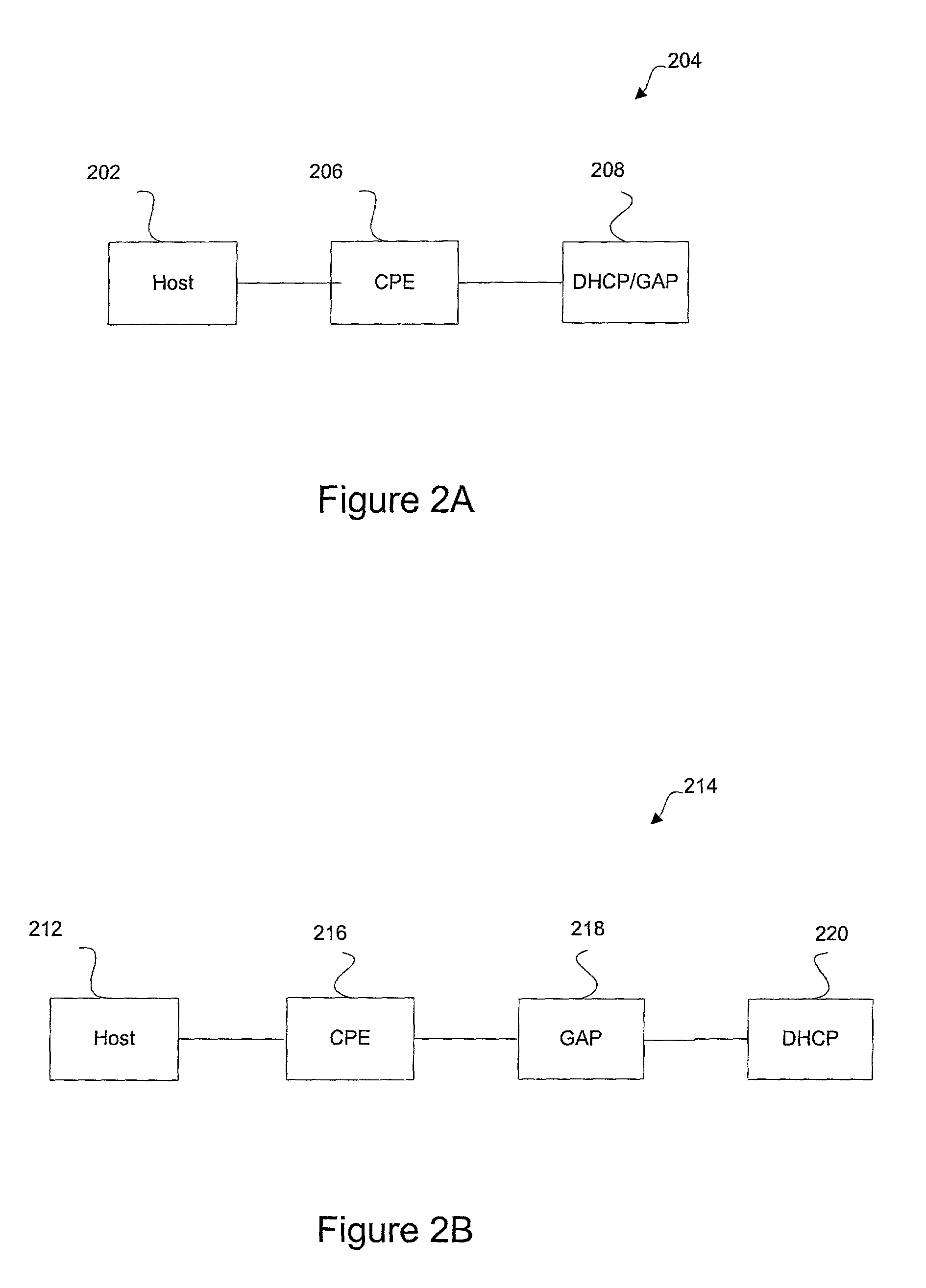Method and apparatus for making end-host network address translation (NAT) global address and port ranges aware
a technology of network address translation and end-host, applied in the field of methods and apparatus for processing data within a computer network, can solve the problems of insufficient number of ip addresses, high cost, and high complexity of the reconfiguration process, and achieve the effect of reducing the number of nat devices that need to be reconfigured for a new or modified application, and reducing the number of nat devices
- Summary
- Abstract
- Description
- Claims
- Application Information
AI Technical Summary
Benefits of technology
Problems solved by technology
Method used
Image
Examples
first embodiment
[0046]In a first embodiment, each edge router may include all three CPE, DHCP, and GAP capabilities, or these capabilities may be configured in two or more individual devices including the edge router. The DHCP capabilities are optional and may not be present when a proprietary request and reply is used to obtain a GA (and GPR) for a host. FIGS. 2A through 2D are diagrammatic representations of several different configurations of devices which may each be operable to provide a GA (and GPR) to a corresponding host.
[0047]FIG. 2A shows a plurality of CPE / DHCP / GAP devices 204 for providing either (1) a GA or (2) GA and GPR to a corresponding host in accordance with a second embodiment of the present invention. As shown, a host 202 is coupled to a CPE 206, which is coupled to a device 208 that includes DHCP and GAP capabilities. FIG. 2B is a diagrammatic representation of a plurality of CPE / DHCP / GAP devices 214 for providing either (1) a GA or (2) GA and GPR to a host 212 in accordance w...
second embodiment
[0050]FIG. 3B is a communication diagram illustrating a procedure 310 for a host 102a to obtain a global address through a CPE device 206 which is physically separate from a corresponding DHCP / GAP device 208 in accordance with the present invention. Initially, host 102a sends a DHCP request for a local address for host 102a to CPE 206. The CPE 206 is operable as a DHCP relay and thereby forwards the DHCP request to DHCP / GAP device 208. The DHCP / GAP device 208 then returns a DHCP reply having a local address for host 102a, either (1) a GA for host 102a or (2) a GA and GPR for host 102a, and an address for GAP device 208.
[0051]In the illustrated embodiments in which the GAP device is physically separate from the CPE device (e.g., FIGS. 3B through 3D), the reply is shown to include the GAP device's address. The host 102a may then subsequently use the address for the GAP device to obtain an additional GPR (e.g., if the host 102a eventually uses all of its ports within its obtained GPR) ...
third embodiment
[0052]FIG. 3C is a communication diagram illustrating a procedure 320 for a host 102a to obtain a global address through a CPE device 216 which is physically separate from a corresponding DHCP device 220 and a GAP device 218 in accordance with the present invention. Initially, the host 102a sends a DHCP request for a local address for host 102a to CPE 216. The CPE 216 forwards the request to DHCP device 220. The DHCP device 220 is operable to send a request for the global address for host 102a to GAP device 218. The GAP 218 then replies with the global address for host 102a to DHCP 220. The DHCP 220 may then send a DHCP reply having a local address for host 102a, either (1) a GA for host 102a or (2) a GA and GPR for host 102a, and an address for GAP device 218 to host 102a.
PUM
 Login to View More
Login to View More Abstract
Description
Claims
Application Information
 Login to View More
Login to View More - R&D
- Intellectual Property
- Life Sciences
- Materials
- Tech Scout
- Unparalleled Data Quality
- Higher Quality Content
- 60% Fewer Hallucinations
Browse by: Latest US Patents, China's latest patents, Technical Efficacy Thesaurus, Application Domain, Technology Topic, Popular Technical Reports.
© 2025 PatSnap. All rights reserved.Legal|Privacy policy|Modern Slavery Act Transparency Statement|Sitemap|About US| Contact US: help@patsnap.com



